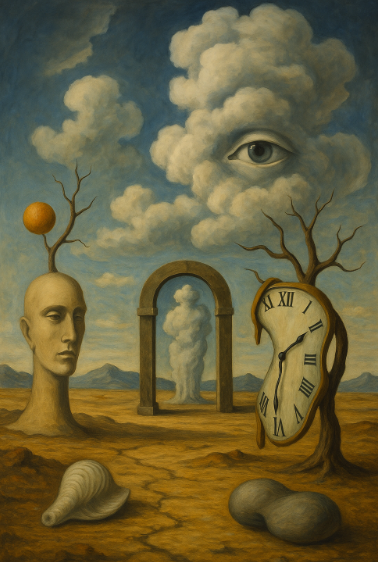Surrealism is more than a visual style—it is a revolution of the mind. Emerging in the wake of World War I, this iconic artistic and literary movement sought to strip away logic, rationality, and societal restraint in favour of the subconscious, the symbolic, and the strange. Born out of trauma and turbulence, Surrealism still echoes through contemporary art, influencing everything from modern painting to digital media, poetry, photography, and even fashion.
The Roots: Dada and Disillusion
To understand Surrealism, one must first grasp the Dada movement that came before it. Dada was an anarchic response to the senseless violence of the First World War. Centred in Zurich, New York, and Paris, Dada artists such as Marcel Duchamp and Hannah Höch created works designed to disrupt meaning entirely. Dada was chaos. Surrealism, however, was transformation.
In 1924, French poet and writer André Breton published the First Surrealist Manifesto, calling for an artistic practice that embraced dreams, automatic writing, and the unconscious mind. Drawing heavily from Sigmund Freud’s theories of psychoanalysis, Breton and his circle—including artists Max Ernst, André Masson, and Man Ray—sought to bypass rational thought and tap into the raw language of the subconscious.
The Icons of the Imagination
Surrealism spread like wildfire through 1920s and 1930s Europe, attracting a remarkable array of talents. Each artist brought a unique lens to the surrealist vision:
- Salvador Dalí, with his melting clocks and dreamlike desert scenes, remains one of the most recognisable names in the movement. His works embody a kind of lucid dream logic, rich in symbolism, anxiety, and often dark humour.
- René Magritte, by contrast, explored the uncanny through deceptively calm and ordered imagery. His painting The Treachery of Images (“Ceci n’est pas une pipe”) challenges our assumptions about reality and representation.
- Leonora Carrington and Dorothea Tanning introduced feminine perspectives to the surrealist world, often blending mythology, nature, and psychological transformation.
- Frida Kahlo, though often debated as a surrealist, remains deeply intertwined with the movement through her vivid, symbolic self-portraits and dreamlike explorations of pain, identity, and womanhood.
Surrealism in Literature and Film
Surrealism was not confined to visual art. Writers such as Paul Éluard and Louis Aragon experimented with automatic writing, while filmmakers like Luis Buñuel and Jean Cocteau brought surrealist visions to the screen. Buñuel’s Un Chien Andalou (co-created with Dalí) famously includes a scene in which a razor slices open an eyeball—designed explicitly to shock and unsettle.
In literature, surrealism gave rise to works that flowed from the subconscious: fragmented, poetic, and often unnerving. These texts defied linear storytelling, instead reflecting the dreamlike instability of inner experience.
Surrealism’s Legacy
Though the formal surrealist group disbanded in the 1960s, its spirit continues to inspire. The digital era has revived surrealism in unexpected ways—through photo manipulation, AI art, immersive installations, and absurdist memes. Contemporary artists such as Mark Ryden and Dorota Sadovská blend surreal elements with modern commentary, showing that the surreal is not just an aesthetic—it is a lens for viewing the world.
Moreover, surrealism laid the groundwork for much of conceptual art, performance art, and postmodern critique. Its legacy can be found anywhere artists challenge perception, question reality, or explore the mysteries of the mind.
Surrealism Today: A Creative Invitation
For today’s creatives—whether painters, photographers, writers or mixed media artists—surrealism offers a wellspring of inspiration. It reminds us that meaning is not always logical, that truth can be found in the dream, and that art has the power to disrupt, to enchant, and to awaken.
Whether you’re painting a twisted forest, writing from a dream journal, or photographing the reflection of a cloud in a cracked mirror, the surreal invites you to create not just what is, but what might be.
💬 Join the Discussion
Have thoughts, questions, or just want to chat with fellow creatives? Continue the conversation in our private Members Forum.
Visit the Forum✍️ Submit a Guest Post
Have a story to share, an opinion to voice, or something creative to contribute? We welcome submissions from artists, writers, and all kinds of creatives.
Submit Your Article
